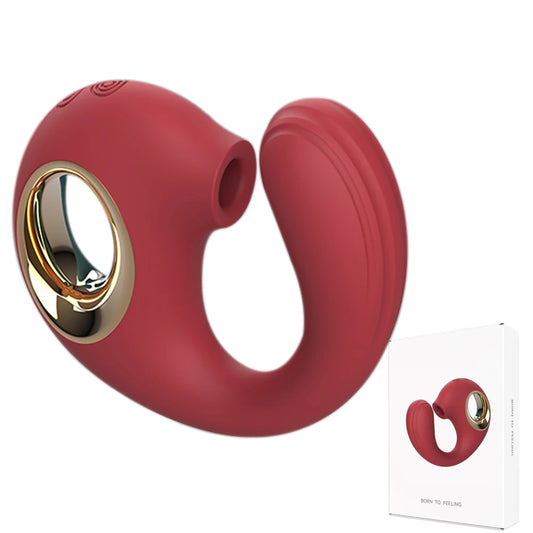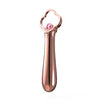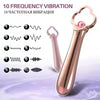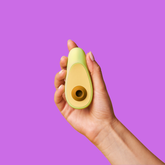How to Clean Sex Toys Safely and Effectively in 2025
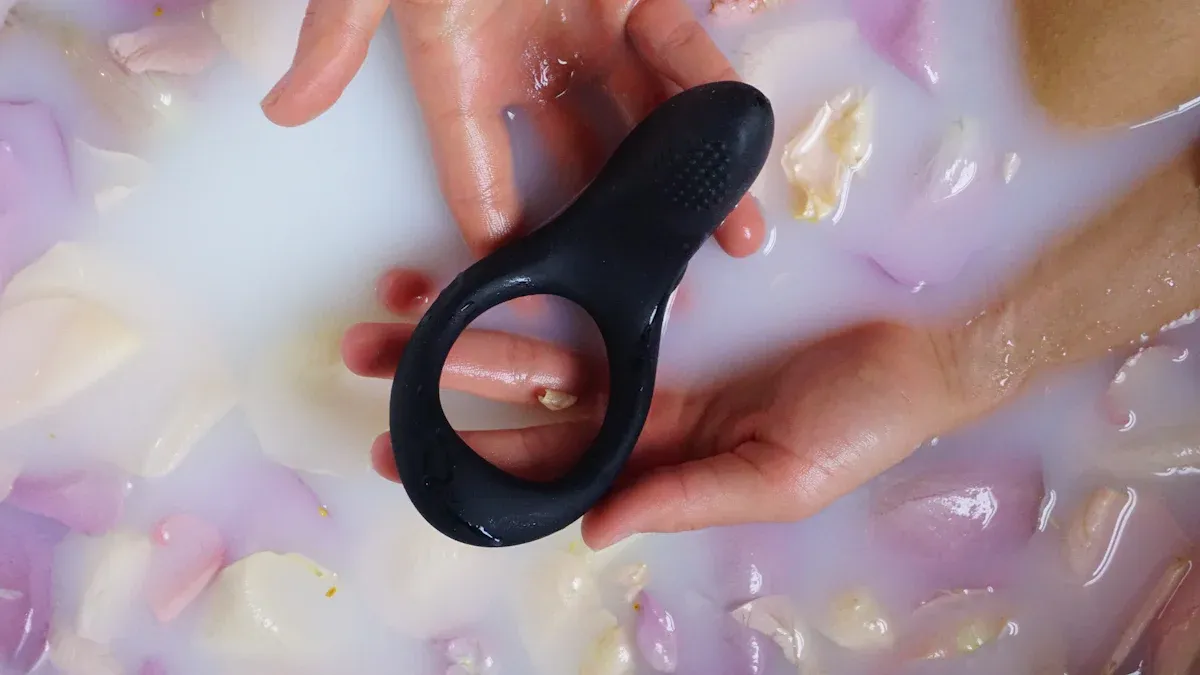
Keeping sex toys clean is important for your health and safety. Dirty toys can hold germs and bacteria that cause infections. Sharing toys can spread sexually transmitted infections (STIs) like HPV, gonorrhoea, and chlamydia. HPV affects millions worldwide and can even lead to cancer. Knowing how to clean sex toys properly helps mitigate these risks and keeps them in good shape. This not only helps them last longer but also ensures they remain safe to use. By understanding how to clean sex toys effectively, you protect yourself and enhance your enjoyment of them.
Key Takeaways
Clean sex toys after each use to prevent germs and infections. This simple step keeps you safe and healthy.
Use the right cleaning method based on the toy's material. Nonporous toys like silicone are easier to clean and last longer.
Store toys in a cool, dry place to maintain their condition. Proper storage prevents damage and keeps them hygienic.
Avoid harsh chemicals like bleach or alcohol. These can harm both your toys and your health.
Regularly check your toys for damage. Replace any that show signs of wear to ensure safe use.
Why Cleaning Sex Toys is Important
Dangers of not cleaning properly
Not cleaning sex toys well can harm your health. Germs and bacteria grow on dirty toys, which can cause infections. Sharing toys increases the chance of spreading sexually transmitted infections (STIs). Diseases like gonorrhoea and chlamydia can stay on toys and infect you again.
Toys made from porous materials, like jelly or rubber, soak up fluids and germs easily. If not cleaned properly, these toys can hold harmful bacteria that are hard to remove. This can cause bad smells, damage the material, or even trigger allergies.
Tip: Clean your toys right after using them to stop germs from growing and avoid spreading bacteria.
Why regular cleaning helps
Cleaning your sex toys often keeps them safe and clean. It removes harmful germs and viruses, lowering your risk of infections. Research shows cleaning toys reduces the chance of spreading HPV. For instance, one study found HPV in 75% of vaginal samples from women using sex toys. After cleaning, HPV on one toy dropped from 89% to 56%, then to 40% after 24 hours. Another toy showed a drop from 67% to 44%, with no HPV left after 24 hours. This proves regular cleaning can greatly reduce viruses.
Cleaning also makes your toys last longer. Dirt and leftover residue can damage the material, causing cracks or fading. Keeping them clean protects the toy and ensures it stays safe to use again.
🧼 Pro Tip: Use gentle soap or special cleaners to clean delicate materials without causing damage.
How to Clean Sex Toys Based on Material
Porous vs. nonporous materials
Knowing what your sex toys are made of is key. Porous materials, like jelly rubber and latex, have tiny holes. These holes trap germs and fluids. They are harder to clean well, making them less safe over time. Nonporous materials, such as silicone and glass, do not soak up fluids. They are much easier to clean.
Nonporous toys, like silicone vibrators, are best for staying clean and lasting long. Porous toys need more care and should not be shared. This helps avoid infections.
Tip: If you don't know your toy's material, check the box or maker's website.
Cleaning requirements for common materials
Different materials need different cleaning ways to stay safe and last. Here's a simple guide:
Material |
Porous or nonporous |
How to clean |
Other notes |
|---|---|---|---|
Silicone |
Nonporous |
Wash with warm water and soap. Boil non-motor toys to sterilise. |
Don't use silicone lubes to avoid harm. |
Glass and stainless steel |
Nonporous |
Use warm water and soap or boil for deep clean. |
Let glass toys cool naturally after boiling to stop cracks. |
Jelly rubber, TPE, TPR |
Porous |
Wash with antibacterial soap and warm water. |
These can't be fully cleaned and shouldn't be shared. |
Porous materials, like jelly rubber, hold germs even after washing. Nonporous ones, like silicone, are safer and easier to keep clean. For vibrators, don't put motor parts in water unless waterproof.
Following manufacturer guidelines
Always read the maker's cleaning advice for your toys. These tips are based on the toy's material and design. Some vibrators have parts you can take off to clean. Others might need special cleaners.
Note: Following the manual helps you clean your toy right without breaking it. This is very important for motor toys, as wrong cleaning can stop them working.
Step-by-Step Guide on How to Clean Your Sex Toys
Cleaning with soap and water
Soap and water are easy and effective for cleaning toys. This works best for nonporous materials like silicone, glass, and stainless steel. Follow these steps to clean your toy:
Rinse the toy with warm water: Use lukewarm water to wash off dirt. Avoid hot water, as it can harm some materials.
Use mild antibacterial soap: Pick unscented soap to prevent skin irritation. Rub the soap gently over the toy.
Scrub for 20 seconds: Use your hands or a soft cloth to clean all parts. For small details, a soft toothbrush can help.
Rinse well: Make sure no soap is left behind. Soap residue can irritate your skin.
Dry with a clean towel: Pat the toy dry with a lint-free towel. Let it air dry fully before storing.
Note: Soap and water work well for nonporous toys. Studies show warm water and antibacterial soap remove harmful germs. However, this method may not fully clean porous materials.
Using specialised cleaners
Special cleaners are made to clean toys safely and quickly. These are great for delicate materials or when you're short on time. They come as sprays, foams, or wipes. Here's how to use them:
Pick the right cleaner: Make sure the cleaner suits your toy's material. Check the label or maker's website for advice.
Apply the cleaner: Spray or spread the cleaner evenly on the toy. Avoid motor parts unless the label says it's safe.
Wait for it to work: Leave the cleaner on for 30 seconds to a minute. This kills germs effectively.
Wipe or rinse off: Use a damp cloth to wipe the cleaner away. Some cleaners may need rinsing with water.
Dry completely: Like with soap, make sure the toy is fully dry before storing.
Special cleaners are safe and protect sensitive materials. They also help your toys last longer. For example, products like JO® REFRESH FOAMING TOY CLEANER use organic ingredients, which are gentle on skin. Experts recommend these cleaners to stop infections and keep toys clean.
Tip: Don't use harsh chemicals like bleach or alcohol. These can damage the toy and make it unsafe.
Boiling and UV sterilisation
For a deeper clean, boiling and UV sterilisation are great for nonporous toys. These methods kill germs, viruses, and fungi for top hygiene.
Boiling:
What to boil: Only boil toys made of pure silicone, glass, or stainless steel. Make sure they are waterproof and have no motors.
-
How to boil:
Fill a pot with enough water to cover the toy.
Bring the water to a boil.
Put the toy in the boiling water for 3 minutes. Use tongs to avoid burns.
Take the toy out and let it cool on a clean surface.
Why it works: Boiling kills germs with high heat. It's a trusted way to disinfect.
UV Sterilisation:
How it works: UV-C light destroys germs by damaging their RNA. This stops them from growing.
-
How to use:
Wash the toy with soap and water first.
Place the toy in a UV steriliser, making sure all parts get light.
Follow the steriliser's instructions, usually for a few minutes.
Benefits: UV sterilisation is fast, safe, and works well for nonporous toys. It's perfect for keeping toys hygienic.
Reminder: Always clean toys with soap and water before boiling or using UV light. These methods disinfect but don't remove dirt.
By using these cleaning methods, your toys will stay safe, clean, and last longer.
Avoiding harsh chemicals
Using strong chemicals to clean sex toys can be harmful. Many cleaners have ingredients that can ruin the toy or harm you. Always pick cleaning methods that are safe for both you and your toys.
Why harsh chemicals are harmful
Some chemicals, like phthalates, are very dangerous. These are often in cheap toys and can leak out when cleaned with strong products. Phthalates are seen as possible cancer-causing by the FDA. Animal studies show phthalates can harm baby and genital growth. In humans, they may affect sperm and baby development. This is why avoiding harsh cleaners is so important.
Strong chemicals can also damage toy materials. For instance, silicone can lose its smooth feel if cleaned with alcohol or bleach. Porous materials, like jelly rubber, are even weaker. These chemicals can cause cracks or fading, making the toy unsafe. If you have a silicone dildo or similar toy, gentle cleaning keeps it in good condition.
Safe alternatives to harsh chemicals
You don’t need strong cleaners to keep toys clean. Safer options include mild soap, warm water, and special toy cleaners. These clean germs without harming the toy. For a deeper clean, boiling or UV light works well for nonporous toys. Always check the maker’s advice to match the cleaning method to the toy.
Tip: Don’t use bleach, alcohol, or scented soaps. These can hurt your skin and damage your toys.
By avoiding harsh chemicals, you stay safe and make your toys last longer. Using safe cleaning methods keeps your toys clean and fun to use.
How to Clean and Store Sex Toys Properly
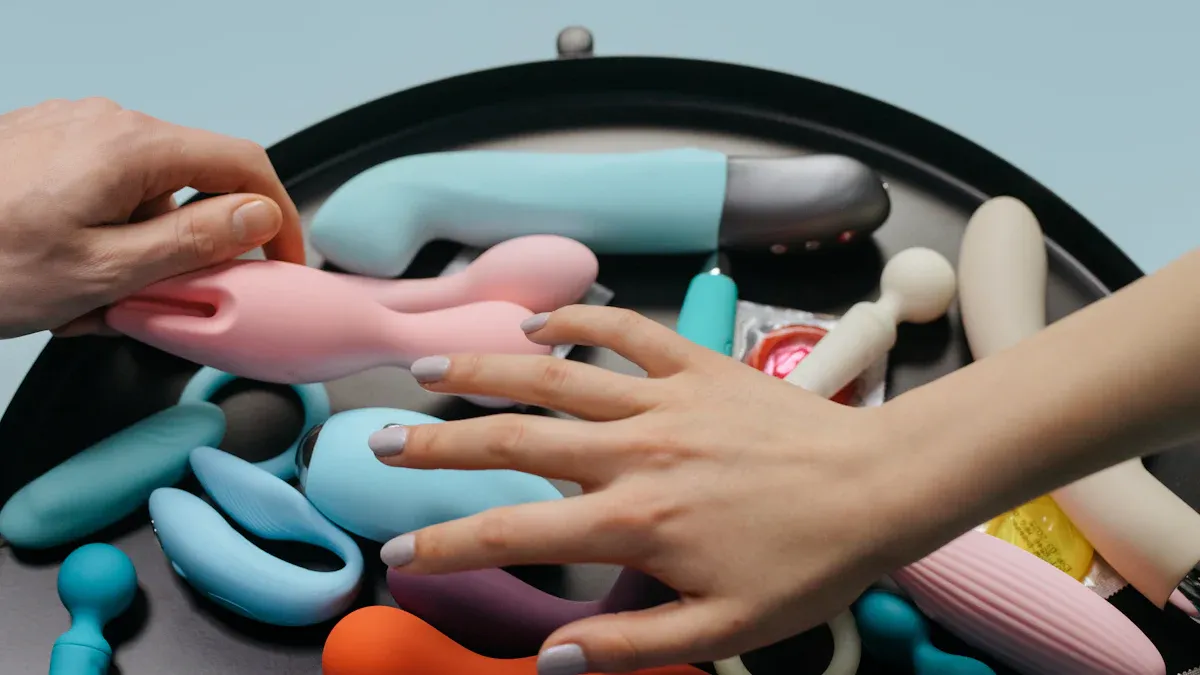
Drying to stop bacteria growth
Drying sex toys well stops bacteria and keeps them clean. After washing, pat the toy dry with a clean towel. For nonporous toys like silicone, glass, or steel, air drying works best. Place the toy on a clean surface until fully dry. Any leftover moisture can grow bacteria or mould, making the toy unsafe.
Porous toys need extra care when drying. These materials soak up fluids, making germs harder to remove. Use drying sticks to reach tricky spots and absorb moisture. If the toy has electrical parts, keep the battery area dry to avoid damage. Drying properly not only keeps the toy clean but also helps it last longer.
Safety Precaution: Never store a damp toy. This can grow bacteria and ruin the material.
Storing for cleanliness and durability
Storing sex toys the right way keeps them safe and ready to use. Use a special bag or box to protect toys from dust. Nonporous toys, like silicone, are easier to store hygienically. For soft or jelly toys, store them separately to stop them sticking together.
Keep toys in a cool, dry place, away from sunlight or heat. Heat can bend some materials, and cold can make them crack. For battery toys, take out the batteries before storing to stop leaks. Waterproof toys are simpler to clean and store since water won’t harm them.
Tip: Label storage bags to find toys easily and avoid mixing materials that might react badly.
Tips to keep toys in good shape
Looking after your sex toys keeps them safe and working well. Follow these easy steps:
Wash toys after each use with mild soap or toy cleaner. This stops germs from building up.
Dry toys completely with air drying or drying sticks to remove moisture.
Store toys in a bag or box to keep them clean and safe.
Use water-based lubes to protect materials, especially for silicone toys.
Check toys often for cracks or fading. Replace damaged ones to stay safe.
Cleaning, storing, and checking your toys regularly keeps them in great condition. By doing this, you can use them safely and make them last longer.
Advanced Sex Toy Cleaning Methods
Boiling for deep disinfection
Boiling is a great way to clean nonporous toys. The heat kills germs, viruses, and fungi, making toys safe. This works best for toys made of pure silicone, glass, or steel. Make sure the toy has no motor or electronic parts before boiling.
To boil, fill a pot with enough water to cover the toy. Heat the water until it boils, then carefully place the toy in using tongs. Let it boil for 3–5 minutes. Take it out with tongs and let it cool on a clean towel. Don’t boil toys with paint or delicate designs, as heat can ruin them.
Tip: Wash the toy with soap and water first to remove dirt.
Using bleach solutions safely
Bleach solutions can clean toys well if used properly. This method works for nonporous materials like silicone, glass, and steel. Don’t use bleach on porous toys, as it can soak in and cause irritation.
To make a bleach solution, mix one part bleach with ten parts water. Fully submerge the toy in the mix for 10 minutes. Rinse it well with warm water to remove all bleach. Let the toy air dry on a clean surface before storing. Never use pure bleach, as it can harm the toy and your skin.
Safety Note: Wear gloves when using bleach to protect your hands.
Dishwashers: Pros and cons
Dishwashers may seem easy for cleaning toys but have limits. Most dishwashers don’t sanitise, so they’re not better than hand-washing. High heat and strong detergents can damage soft silicone toys.
If using a dishwasher, place the toy on the top rack. Avoid using detergent to reduce damage risks. Still, hand-washing with soap or using special cleaners is safer and more effective.
Reminder: Always check the maker’s advice before cleaning toys in a dishwasher.
Cleaning and storing sex toys the right way is important. It keeps you healthy and helps toys last longer. Here’s why it’s essential:
Using the correct cleaning method protects the toy’s material.
Storing toys properly keeps them clean and in good condition.
Taking care of your toys makes them safer and more fun to use. Handle them gently so they stay ready whenever you need them.
FAQ
How often should you clean your sex toys?
Clean your sex toys after every use. This stops germs from growing. Regular cleaning keeps them safe and ready to use again. If sharing toys, clean them well before and after each use.
Can you use regular soap to clean sex toys?
Yes, mild and unscented soap works for most sex toys. Avoid strong soaps or scented ones, as they can harm your skin or the toy. Always rinse well to remove all soap.
Is it safe to share sex toys?
Sharing sex toys is okay if cleaned properly between uses. Use condoms on porous toys to lower infection risks. Nonporous toys are safer when disinfected well. Always focus on hygiene to stay safe.
What should you do if your toy has a motor?
For motorised toys, don’t put the motor in water unless waterproof. Use a damp cloth with mild soap to clean the outside. Follow the maker’s instructions to avoid damaging the motor.
Can you use baby wipes to clean sex toys?
Baby wipes aren’t the best for cleaning toys. They might leave residue that irritates skin. Use warm water and mild soap or special toy cleaners instead. If using wipes, pick unscented, alcohol-free ones and rinse the toy after.


